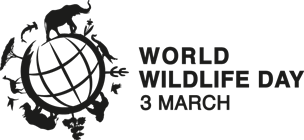Editing Office - Intl. News
 When we think about wildlife most of us picture elephants, rhinos and tigers – all important land-based species that are regularly on the agenda of the Convention on International Trade of Endangered Species of Fauna and Flora (CITES). But we should not forget about life below water and the important contribution they make to sustainable development, as enshrined in Goal 14 of the UN Sustainable Development Goals.Marine wildlife has sustained human civilization and development for millennia, from providing food and nourishment, to enriching our lives culturally, spiritually, and recreationally. Every year fisheries generate $362 billion to the global economy. Marine ecotourism offers individuals an educational and adventurous experience and also provides livelihoods for coastal communities.Alarmingly, despite its critical importance, life below water faces many threats, amongst them an area of primary concern for CITES, which is their unsustainable exploitation for international trade. CITES provides a safety net for our threatened marine life and it has a long history of regulating international trade in marine species to ensure that this trade does not threaten their survival. This role has significantly expanded over recent years, with CITES Parties agreeing to list an increasing number of commercially exploited marine species under the Convention.The majority of these marine species are listed on CITES Appendix II, meaning that they can continue to be traded as long as the trade is sustainable and legal. Further, for CITES purposes, “introduction from the sea”, namely the transport of specimens from the high seas into a country Party, also counts as trade, making it one of the few existing instruments regulating activities on the high seas. CITES, therefore, contributes also to SDG 17 on strengthening the means of implementation and revitalizing the global partnership for sustainable development, to ensure that international trade in wildlife is sustainable, focusing on species that have declined to a level that require strong management measures to maintain or rebuild stocks.This serves as an example of the positive role international trade can have to support the implementation of science-based management plans and rebuild fish stocks to sustainable levels, complementing the work of other organizations to improve fisheries management at a global scale.Well-managed and sustainable international trade greatly contributes to livelihoods and the conservation of marine species. The sustainable harvesting and trade in corals in Indonesia, which boasts the highest coral diversity in the world, has not only improved the livelihoods of coastal communities but also prevented over-exploitation due to CITES trade controls.We are all striving to achieve the same objective of sustainability: for people and planet – where wildlife, be it terrestrial or marine, can thrive in the wild while also benefiting people. We, here at CITES, will continue to work tirelessly to ensure international trade in CITES-listed marine species is sustainable and support our Parties in implementing science-based management.
When we think about wildlife most of us picture elephants, rhinos and tigers – all important land-based species that are regularly on the agenda of the Convention on International Trade of Endangered Species of Fauna and Flora (CITES). But we should not forget about life below water and the important contribution they make to sustainable development, as enshrined in Goal 14 of the UN Sustainable Development Goals.Marine wildlife has sustained human civilization and development for millennia, from providing food and nourishment, to enriching our lives culturally, spiritually, and recreationally. Every year fisheries generate $362 billion to the global economy. Marine ecotourism offers individuals an educational and adventurous experience and also provides livelihoods for coastal communities.Alarmingly, despite its critical importance, life below water faces many threats, amongst them an area of primary concern for CITES, which is their unsustainable exploitation for international trade. CITES provides a safety net for our threatened marine life and it has a long history of regulating international trade in marine species to ensure that this trade does not threaten their survival. This role has significantly expanded over recent years, with CITES Parties agreeing to list an increasing number of commercially exploited marine species under the Convention.The majority of these marine species are listed on CITES Appendix II, meaning that they can continue to be traded as long as the trade is sustainable and legal. Further, for CITES purposes, “introduction from the sea”, namely the transport of specimens from the high seas into a country Party, also counts as trade, making it one of the few existing instruments regulating activities on the high seas. CITES, therefore, contributes also to SDG 17 on strengthening the means of implementation and revitalizing the global partnership for sustainable development, to ensure that international trade in wildlife is sustainable, focusing on species that have declined to a level that require strong management measures to maintain or rebuild stocks.This serves as an example of the positive role international trade can have to support the implementation of science-based management plans and rebuild fish stocks to sustainable levels, complementing the work of other organizations to improve fisheries management at a global scale.Well-managed and sustainable international trade greatly contributes to livelihoods and the conservation of marine species. The sustainable harvesting and trade in corals in Indonesia, which boasts the highest coral diversity in the world, has not only improved the livelihoods of coastal communities but also prevented over-exploitation due to CITES trade controls.We are all striving to achieve the same objective of sustainability: for people and planet – where wildlife, be it terrestrial or marine, can thrive in the wild while also benefiting people. We, here at CITES, will continue to work tirelessly to ensure international trade in CITES-listed marine species is sustainable and support our Parties in implementing science-based management.